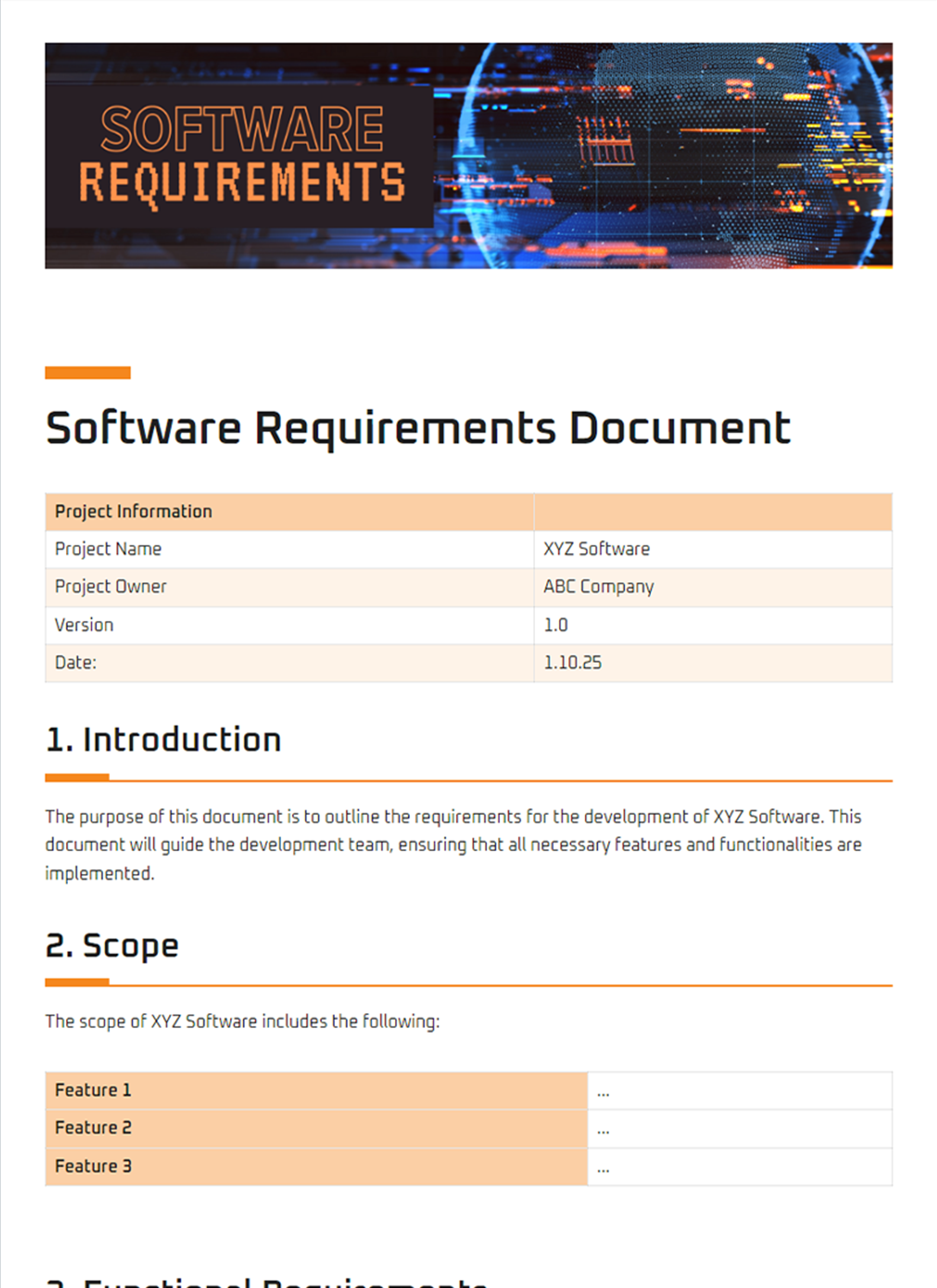The essence of a successful software development project lies in the precise definition and articulation of user requirements. A well-crafted software user requirements template serves as a linchpin in this process, providing a structured and standardized approach to capture, document, and communicate the needs and expectations of the end-users. By leveraging a template, software development teams can enhance clarity, reduce ambiguity, and ensure that the final product aligns precisely with the intended purpose.
A comprehensive software user requirements template typically consists of several key sections, each addressing a specific aspect of the software’s functionality and usability. These sections may include a description of the intended users, their goals, and the tasks they intend to perform with the software. The template may also incorporate sections for documenting specific requirements, such as functional, non-functional, and quality attributes. By comprehensively capturing these details, the template establishes a shared understanding between stakeholders, reducing the likelihood of misunderstandings and deviations from the desired outcome.

Importance of Using a Software User Requirements Template
The adoption of a software user requirements template offers a multitude of benefits that contribute to the success of software development projects. By employing a standardized approach, teams can achieve the following advantages:
- Improved Clarity and Consistency: The use of a template ensures that user requirements are documented in a consistent and structured manner, eliminating ambiguity and promoting clarity. This uniformity facilitates efficient communication among stakeholders, reducing the risk of misinterpretation.
- Enhanced Traceability: A well-defined template enables the traceability of requirements throughout the development lifecycle, from initial conception to final implementation. This traceability allows teams to track changes and ensure that modifications align with the evolving needs of the users.
- Reduced Development Time and Cost: By providing a clear roadmap, a software user requirements template helps streamline the development process, reducing the likelihood of costly rework and delays. The upfront investment in requirements gathering and documentation pays dividends in the long run, minimizing the overall time and resources required to deliver a successful product.
- Increased User Satisfaction: When user requirements are accurately captured and implemented, the resulting software is more likely to meet the needs and expectations of the end-users. This leads to higher user satisfaction, improved adoption rates, and reduced support costs.
- Improved Communication: A shared understanding of user requirements fosters effective communication among stakeholders, including developers, product managers, and end-users. This collaborative environment enhances decision-making and ensures that the software aligns with the intended purpose.
Sections of a Software User Requirements Template
A comprehensive software user requirements template typically includes the following sections:
- Introduction: This section provides an overview of the purpose of the software, its intended users, and the scope of the project.
- User Profiles: This section describes the different types of users who will interact with the software, their roles, goals, and tasks.
- Functional Requirements: This section outlines the specific tasks that the software must be able to perform to meet the needs of the users. These requirements are typically expressed in terms of user stories or use cases.
- Non-Functional Requirements: This section describes the overall qualities of the software, such as performance, security, usability, and reliability. These requirements ensure that the software meets the technical and operational needs of the organization.
- Quality Attributes: This section defines the specific quality characteristics that the software must possess, such as accuracy, completeness, consistency, and timeliness. These attributes ensure that the software meets the desired level of quality.
In addition to these core sections, a software user requirements template may also include sections for capturing additional information, such as acceptance criteria, mockups, or wireframes. By providing a comprehensive and structured approach to user requirements gathering and documentation, a software user requirements template plays a critical role in the success of software development projects.
Conclusion
A well-crafted software user requirements template is an indispensable tool for software development teams, providing a structured and standardized approach to capture, document, and communicate the needs and expectations of end-users. By adopting a template, teams can enhance clarity, reduce ambiguity, and ensure that the final product aligns precisely with the intended purpose. The sections outlined in this template provide a comprehensive framework for capturing and documenting user requirements, fostering effective communication among stakeholders, and ultimately delivering software that meets the needs of the users.
Embracing a software user requirements template is not merely a good practice but an investment in the success of any software development project. By investing in the upfront effort of defining and documenting requirements, teams can lay the foundation for a successful and efficient development process, ultimately leading to software that meets the needs of the users and achieves the desired business outcomes.
